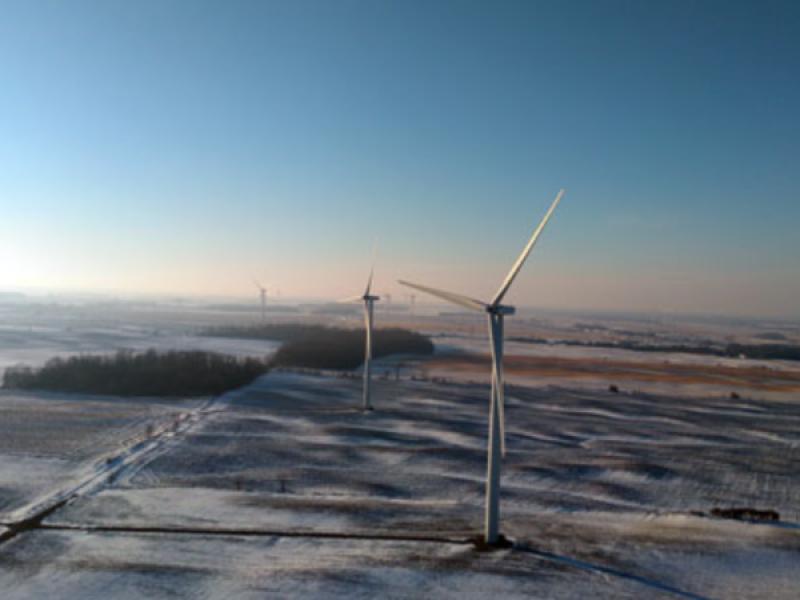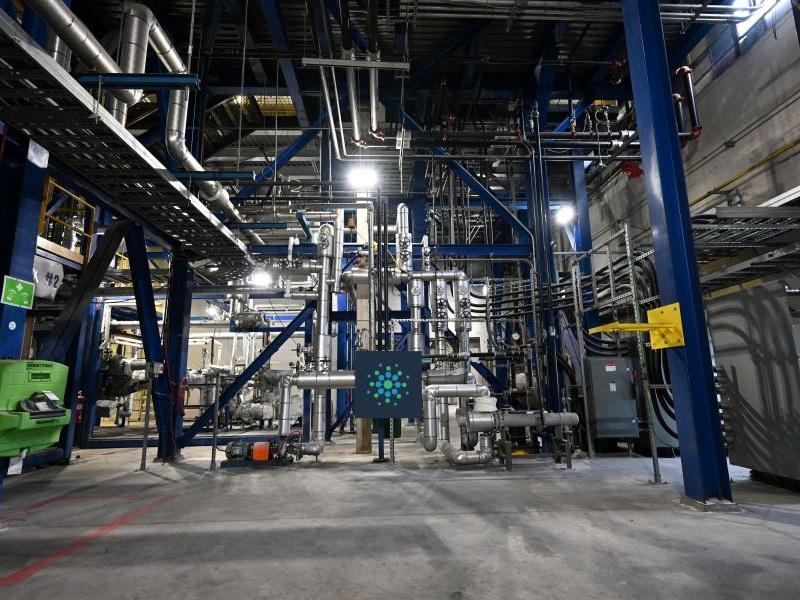
Rio Tinto plans to build the largest solar power plant across Canada’s territories at its Yellowknife Diavik diamond mine, featuring over 6,600 bifacial panels generating over 4,200 megawatt-hours of electricity annually.
Commercial production from the mine is set to end in early 2026. The solar power plant is anticipated to provide up to 25 per cent of the mine's power during closure work that will run until 2029.
The company plans for the solar project to provide up to five per cent of the mine’s power in operations, Angela Bigg, president and chief operating officer of the Diavik mine, told SustainableBiz.
“We are the land of the midnight sun. And with the newer technology with the bifacial solar panels, this is really what has enabled us to be able to generate energy from light (that) reflects off the snow,” Bigg said.
“So although in the winter months we do have not much sunlight, the bifacial panels are very good at diffused light and reflected light.”
According to the company, it will cut diesel consumption by approximately one million litres per year and reduce emissions by 2,900 tonnes of carbon dioxide equivalent, comparable to eliminating the emissions of 630 cars.
Construction will start in the coming weeks and the solar power plant is scheduled to be fully operational in the first half of 2024.
The Diavik solar power plant
The Diavik mine, located about 200 kilometres south of the Arctic Circle, is fully owned and operated by Rio Tinto (RIO-N). It is Canada’s largest diamond producer, providing 3.5 to 4.5 million carats of rough diamonds annually. Since mining began in 2003 Diavik has produced over 100 million carats of diamonds.
The solar project is supported by $3.3 million in funding from the Northwest Territories’ Large Emitters GHG Reducing Investment Grant program and $600,000 from the federal Clean Electricity Investment Tax Credit.
For the investment program, the territorial government set aside 12 per cent of the total carbon tax paid by a prescribed large emitter during a fiscal year and made the fund available to that emitter for projects contributing to a reduction of greenhouse gas emissions in the region.
The Rio Tinto solar power plant is the first project approved under this program.
Bigg would not reveal the producers of the solar panels themselves. However, the racking for the panels will be provided by Toronto-based Polar Racking Inc.
“I think that the uniqueness of the Canadian environment certainly reinforces our decisions around Canadian suppliers,” Bigg said.
The mine’s engineers had been considering solar technology for a while, she said, but previously only the single-sided panels were available.
Diavik already features a wind-diesel hybrid power facility with a capacity of 55.4 megawatts. According to its website, the wind farm has offset Diavik’s diesel use by over 43 million litres and reduced the overall greenhouse gas emissions by 105,000 tonnes since coming online in 2012.
Rio Tinto's goal is to reduce its Scope 1 and 2 greenhouse gas emissions by 50 per cent by 2030 and achieve net-zero across its operations by 2050.
Life beyond the mine
Discussions are ongoing to determine how the solar panels might be used after the mine is closed. Bigg highlighted how the Polar Racking equipment is relatively easy to pack up and reuse when the time comes.
“In terms of the infrastructure itself, Diavik has been working with government of the Northwest Territories, our community and Indigenous stakeholders, looking at all of the infrastructure at the operation, and what potential alternate or reuse opportunities there are,” Bigg explained.
“So this solar power plant will go into that mix of assets to be looked at.”
Although the mine is closing in a few years’ time, that does not close off the possibility of instituting further renewable or sustainable measures at the site.
“I think the fact that this has progressed to funding and ordering, demonstrates we're continually looking at what we can do,” Bigg said. “But unfortunately, there's no magic answer.”










